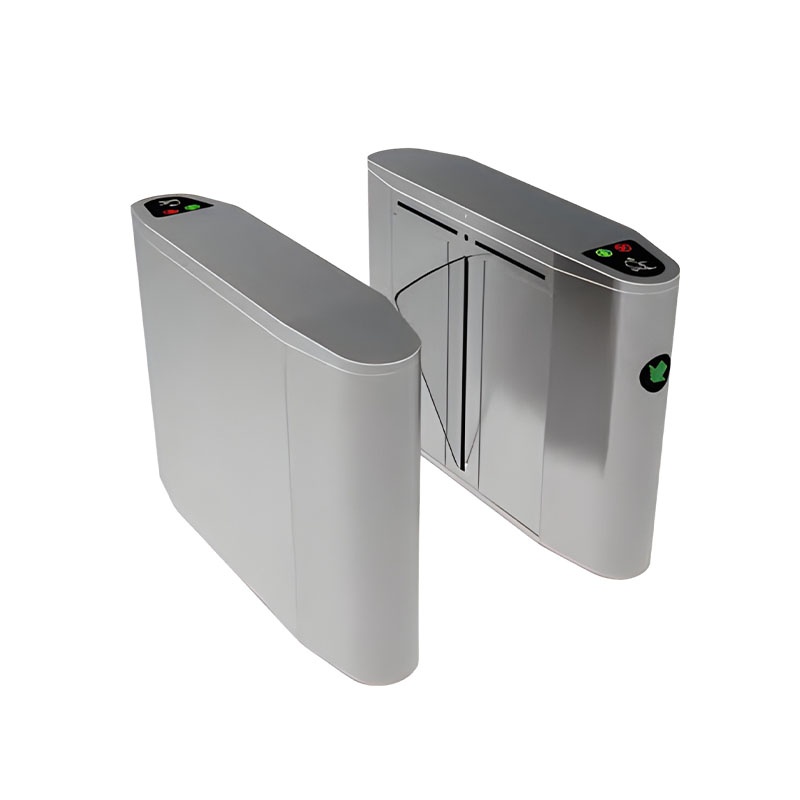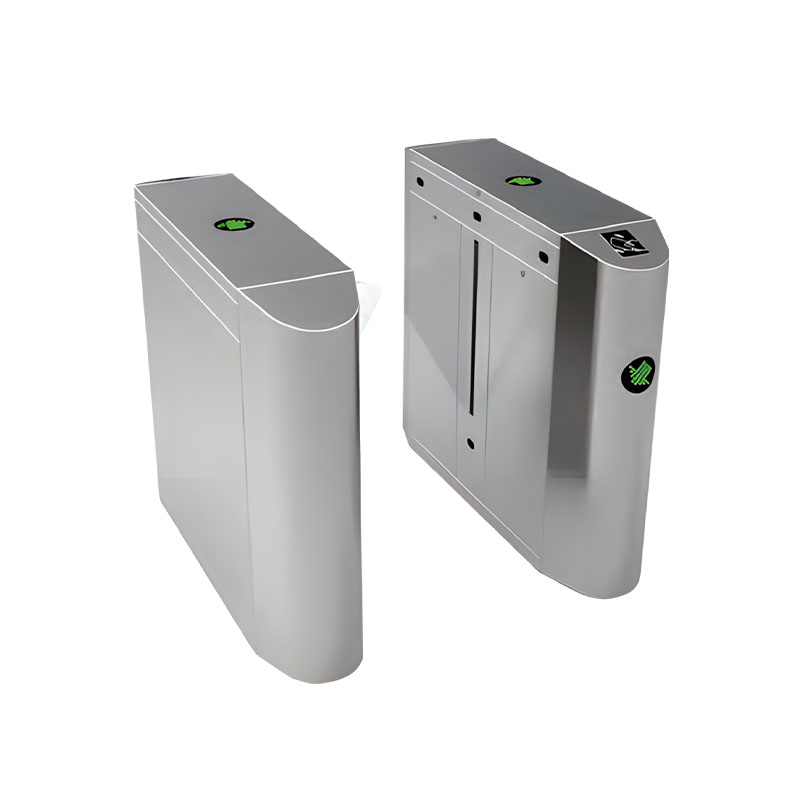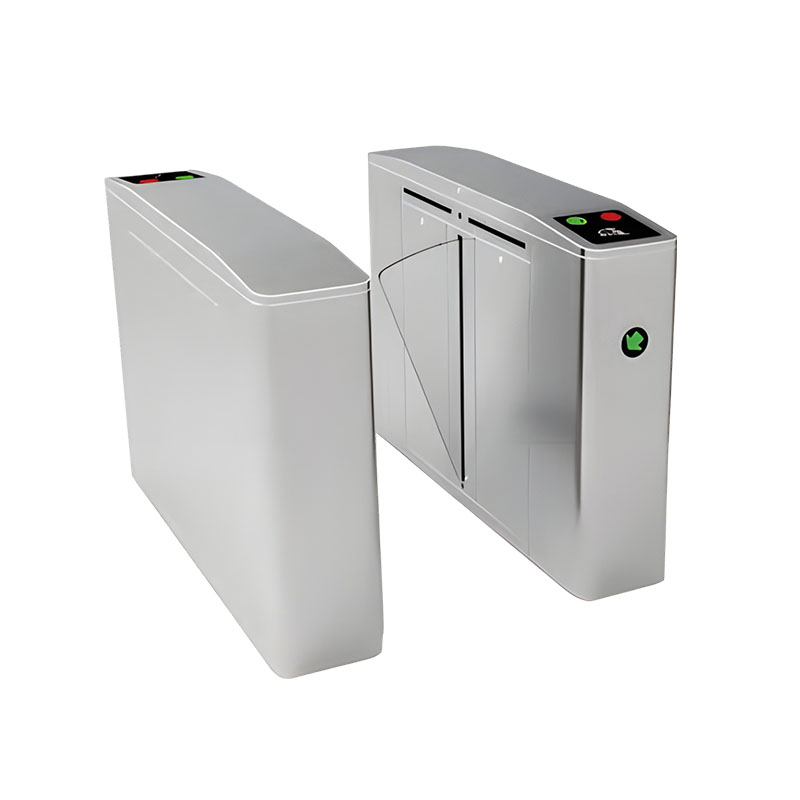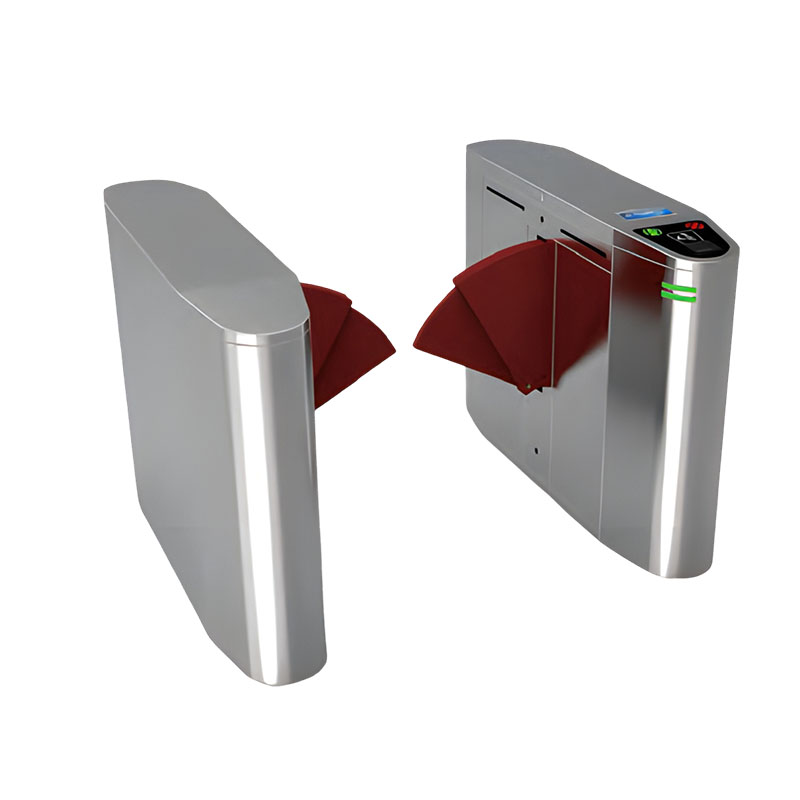How can pedestrian access gates achieve the optimal balance between speed and security during peak traffic flow?
Release Time : 2025-10-08
In high-traffic venues such as airports, subway stations, large campuses, stadiums, and smart office buildings, pedestrian access gates serve as the first line of defense for access control and must ensure efficient passage while ensuring safety. However, there is often a natural tension between speed and security: excessively fast access can lead to risks such as tailgating, gate-jumping, and pinching; excessively strict access can cause queues, inefficient passage, and even disrupt public order. Achieving a dynamic balance of "speed without disruption, strictness without congestion" during peak hours is the core challenge in pedestrian access gate system design. Through intelligent recognition algorithms, mechanical structure optimization, multi-sensor fusion, and system coordination, pedestrian access gates are gradually addressing this challenge.
1. Intelligent Recognition Speeds Up: From "Pause and Verification" to "Contactless Passage"
Traditional pedestrian access gates rely on users to actively swipe their cards or stop for facial recognition, forcibly interrupting the flow of traffic. The new generation of intelligent Pedestrian Access Gates utilizes multimodal fusion recognition technologies—such as long-range facial recognition, dynamic QR code scanning, and Bluetooth/NFC contactless authentication—to verify users' identities at normal walking speeds. Some high-end speed gates even feature AI visual tracking systems, which can predict passing intentions and pre-open the gate flaps, ensuring a seamless "gate opens when you arrive, closes as you go" experience.
2. Anti-tailgating and Anti-collision: Precision Safety Mechanisms
The greatest risks of highway traffic are tailgating and gate-rushing. Pedestrian Access Gates utilize multiple sensors to accurately identify pedestrians: an infrared beam array detects the outline and spacing of people, identifying two people passing closely together; millimeter-wave radar or 3D structured light can distinguish between real people and backpacks or luggage; and AI cameras analyze gait and direction in real time to determine whether a person is traveling in the wrong direction or lagging behind. If an anomaly is detected, the system can immediately trigger partial gate closures, audible and visual alarms, or initiate a back-end communication, rather than simply locking the entire gate, to prevent accidental injuries to innocent users. This "precise interception" strategy ensures safety while minimizing disruption to overall traffic flow.
3. Mechanical Structure Optimization: Fast Opening and Closing with Flexible Protection
The drive system for the gate flaps or swing arms utilizes high-torque servo motors and lightweight composite materials, enabling rapid opening and smooth closing within 0.3 seconds. Furthermore, key areas incorporate pressure sensors and flexible buffering—in the event of pinching or collision, the flaps automatically rebound or pause to prevent injury. This "rigid and flexible" mechanical response supports high-frequency rapid cycling while ensuring personal safety, forming the physical foundation for achieving a balance between speed and safety.
4. System-Level Collaboration: Dynamic Scheduling and Traffic Diversion
The performance of a single gate is limited; true balance requires system-level scheduling. In large venues, pedestrian access gate clusters implement intelligent traffic diversion through a central management platform. These gates dynamically adjust channel modes based on real-time traffic density; integrate reservation systems or permission levels to guide different groups to dedicated channels. During peak hours, they can temporarily switch to "fast mode" for basic verification, with subsequent video review and re-recording. In addition, ground guidance signs, voice prompts, and LED status lights effectively regulate user behavior and reduce interruptions caused by misoperation.
5. Emergency and Redundant Design Ensures Continuous Operation
Equipment failure during peak hours is extremely costly. High-end Pedestrian Access Gates are equipped with redundant mechanisms such as dual power supplies, always-on during power failures, and fault self-diagnosis to ensure that even if some modules fail, basic access functionality is maintained. In an emergency, the system can switch to full evacuation mode with a single button, releasing all channels within 3 seconds, ensuring both safety and efficiency.
In summary, the Pedestrian Access Gate's ability to balance speed and safety during peak traffic flow has evolved from a single device performance competition to an integrated intelligent system engineering process encompassing "perception-decision-execution-coordination." Through technological integration and scenario-specific adaptation, modern Pedestrian Access Gates not only maintain safety but also enable efficient access, truly delivering an "orderly, fast, and secure" smart access experience.
1. Intelligent Recognition Speeds Up: From "Pause and Verification" to "Contactless Passage"
Traditional pedestrian access gates rely on users to actively swipe their cards or stop for facial recognition, forcibly interrupting the flow of traffic. The new generation of intelligent Pedestrian Access Gates utilizes multimodal fusion recognition technologies—such as long-range facial recognition, dynamic QR code scanning, and Bluetooth/NFC contactless authentication—to verify users' identities at normal walking speeds. Some high-end speed gates even feature AI visual tracking systems, which can predict passing intentions and pre-open the gate flaps, ensuring a seamless "gate opens when you arrive, closes as you go" experience.
2. Anti-tailgating and Anti-collision: Precision Safety Mechanisms
The greatest risks of highway traffic are tailgating and gate-rushing. Pedestrian Access Gates utilize multiple sensors to accurately identify pedestrians: an infrared beam array detects the outline and spacing of people, identifying two people passing closely together; millimeter-wave radar or 3D structured light can distinguish between real people and backpacks or luggage; and AI cameras analyze gait and direction in real time to determine whether a person is traveling in the wrong direction or lagging behind. If an anomaly is detected, the system can immediately trigger partial gate closures, audible and visual alarms, or initiate a back-end communication, rather than simply locking the entire gate, to prevent accidental injuries to innocent users. This "precise interception" strategy ensures safety while minimizing disruption to overall traffic flow.
3. Mechanical Structure Optimization: Fast Opening and Closing with Flexible Protection
The drive system for the gate flaps or swing arms utilizes high-torque servo motors and lightweight composite materials, enabling rapid opening and smooth closing within 0.3 seconds. Furthermore, key areas incorporate pressure sensors and flexible buffering—in the event of pinching or collision, the flaps automatically rebound or pause to prevent injury. This "rigid and flexible" mechanical response supports high-frequency rapid cycling while ensuring personal safety, forming the physical foundation for achieving a balance between speed and safety.
4. System-Level Collaboration: Dynamic Scheduling and Traffic Diversion
The performance of a single gate is limited; true balance requires system-level scheduling. In large venues, pedestrian access gate clusters implement intelligent traffic diversion through a central management platform. These gates dynamically adjust channel modes based on real-time traffic density; integrate reservation systems or permission levels to guide different groups to dedicated channels. During peak hours, they can temporarily switch to "fast mode" for basic verification, with subsequent video review and re-recording. In addition, ground guidance signs, voice prompts, and LED status lights effectively regulate user behavior and reduce interruptions caused by misoperation.
5. Emergency and Redundant Design Ensures Continuous Operation
Equipment failure during peak hours is extremely costly. High-end Pedestrian Access Gates are equipped with redundant mechanisms such as dual power supplies, always-on during power failures, and fault self-diagnosis to ensure that even if some modules fail, basic access functionality is maintained. In an emergency, the system can switch to full evacuation mode with a single button, releasing all channels within 3 seconds, ensuring both safety and efficiency.
In summary, the Pedestrian Access Gate's ability to balance speed and safety during peak traffic flow has evolved from a single device performance competition to an integrated intelligent system engineering process encompassing "perception-decision-execution-coordination." Through technological integration and scenario-specific adaptation, modern Pedestrian Access Gates not only maintain safety but also enable efficient access, truly delivering an "orderly, fast, and secure" smart access experience.







